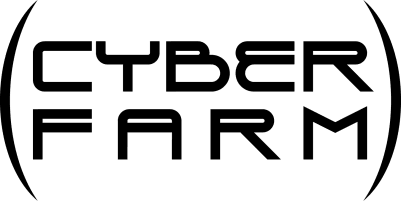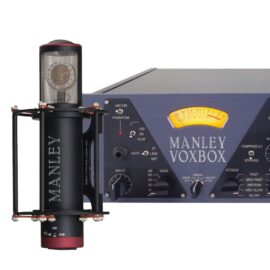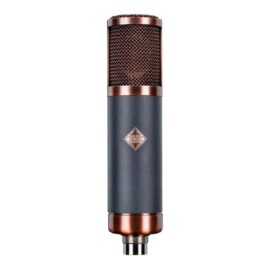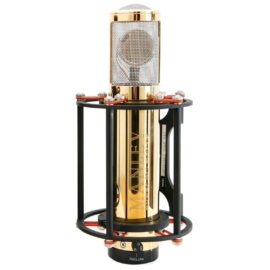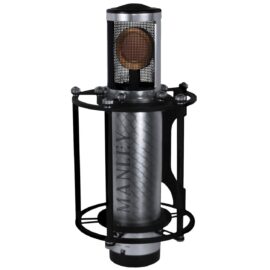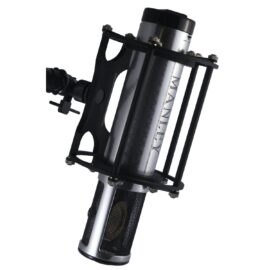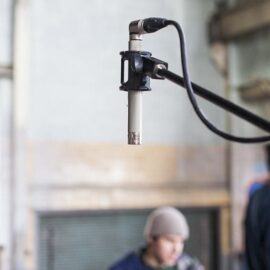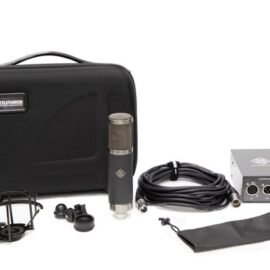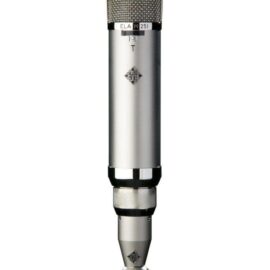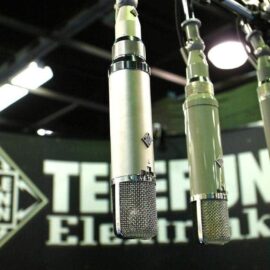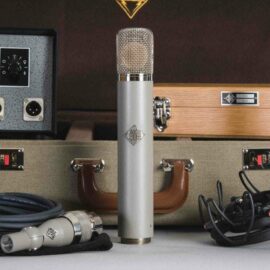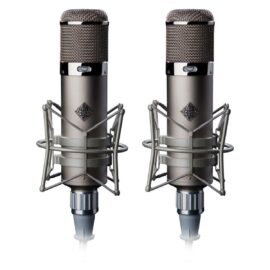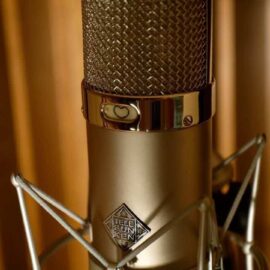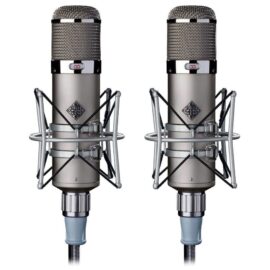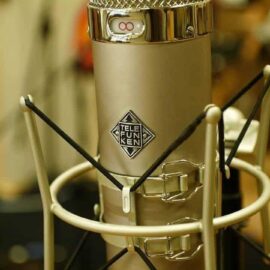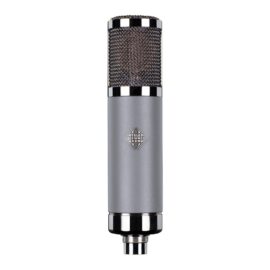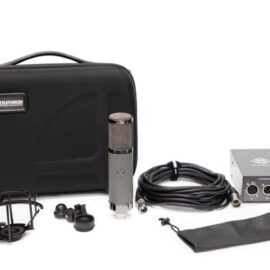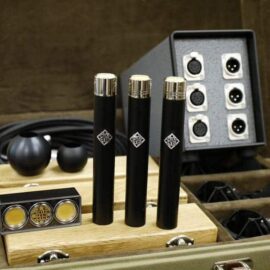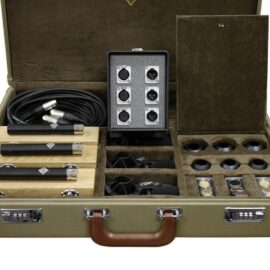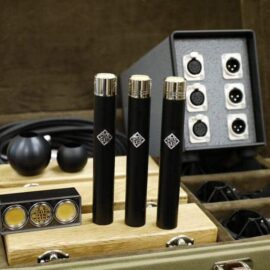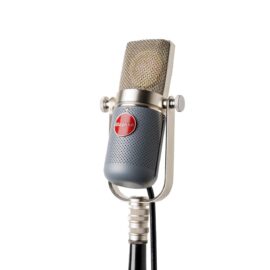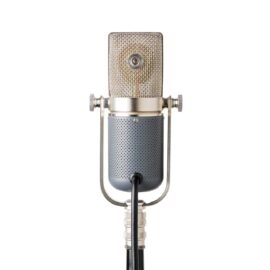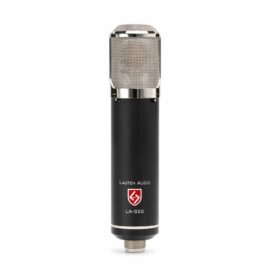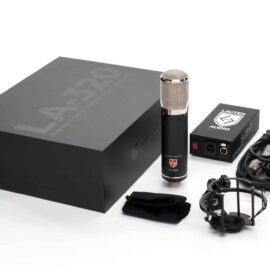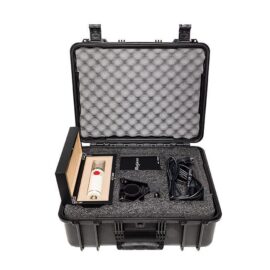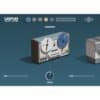Tube microphones
Tube microphones are known for their warm sound and fantastic depth and bottom. The character of a tube microphone is determined by the quality of the components and not least the tube that produces the magical sound. At Cyber Farm, we've rounded up some of the world's best tube microphones to suit every budget. We ship free of charge on orders over NOK 1.450 and ship worldwide.
What is a tube microphone?
Tube microphones are equipped with a vacuum tube that acts as an impedance converter. The vacuum tube gives the tube microphones the characteristic warm sound and a natural compression.

The job of the vacuum tube is to boost the signal's power while lowering the impedance. Condenser tube microphones have condenser capsules that emit low-amplitude, high-impedance audio signals. The job of the vacuum tube is to boost the signal's power while lowering the impedance. That way, the sound (or signal) is able to travel within the rest of the microphone circuit and out of the output connection.
A vacuum tube is an active electronic device that requires current to operate. Therefore tube microphones per definition also active microphones. In addition, the current requirements for a vacuum tube are relatively high, and therefore tube microphones are usually supplied with external power supplies.
Very often tube microphones are large diaphragm condensers, but there are also some small diaphragm tube condensers and even some ribbon tube microphones on the market.
What is a vacuum tube in a tube microphone?
The vacuum tube in a tube microphone is an electronic device. The vacuum tube controls the current in a negative pressure between the electrodes when a voltage is applied. The tube microphone's vacuum tube is a container – typically made of glass or ceramic material. Inside the container there is a negative pressure without oxygen, which is important, as the device could otherwise burn up.
Inside the tube there are electrodes that create a flow of electrons, thus producing an electric current. The simplest vacuum tube we know is the diode, which was invented in 1904. The diode has the two most important electrodes in any vacuum tube: the cathode and the anode. The cathode is the negative electrode of the tube and the anode is the positive electrode. The cathode is heated either directly or indirectly, and when this happens the cathode begins to emit electrons. The electrons are negatively charged, and the cathode repels them, while at the same time the anode attracts them. So by applying the correct power to hear the vacuum tube, we generate an electric current. Note that the tube must be a vacuum, otherwise the oxygen in the tube would burn up the heater and the vacuum tube would not work.
The typical tube microphone
The most common vacuum tube used in a tube microphone is the triode. Triodes have a third electrode called the grid, which is connected to the microphone capsule.
The signal connected to the grid essentially acts as a modulator of the current flow between the cathode and the anode. When the capsule's AC signal peaks, so does the flow between the cathode and anode. When the capsule's AC signal hits its groove, so does the cathode to anode current.
With this functionality, a low-level high-impedance signal from the microphone capsule can drive a relatively high-level low-impedance signal between the cathode and the anode.
In this way, the triode vacuum tube acts as an amplifier and impedance converter in the microphone design.
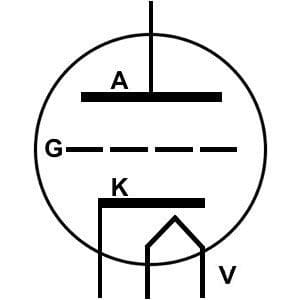
V: heater - K: cathode - A: anode - G: gate
How do tube microphones work?
Condenser tube microphones are typically designed with the following:
- Condenser capsule
- Vacuum tube
- Power supply unit
- Internal circuits
- Output transformer
Examples of good tube microphones
It is always a good idea to look and listen to several different types of audio equipment. This is especially true when it comes to tube microphones.
So let's take a look at a couple of really good quality tube microphones:
FAQ about tube microphones
Does a tube microphone always need power?
All tube microphones have a very specific current requirement and typically must use a higher voltage. Therefore, a specific power supply and a cable are always included for all tube microphones. The power supply will have two audio connectors: a unique multipin connector that connects to the microphone, and a standard 3-pin XLR for the audio output.
Why should I choose a tube microphone?
Choosing a microphone is like choosing a color from a color palette. There is no right or wrong choice. It's more a matter of what you're trying to create with the mic. Many musicians feel that tube microphones produce a warmer and smoother sound with a rich low midrange that can be flattering for vocals. However, it is possible to find tube microphones that are more clean and neutral in sound.
Does a tube microphone need to be warmed up?
In order for the tube microphone to get its characteristic warm sound, it must warm up. If you still use the tube microphone before it is warmed up, nothing else will happen, except that the sound will be different. Nothing happens with the tube microphone.
How long does a tube microphone last?
You should expect the tubes inside the tube microphone to function flawlessly for at least 5 years with daily or near-daily use. Several models can run for a longer time - but they must work for at least 5 years. After this, it may be a good idea to replace the pipes.
How do I take care of my tube microphone?
You should always store your tube microphone in a bag or case when not in use. Your tube microphone packaging will prevent dust and dust particles from settling inside the microphone.
Quick shortcuts:
If you want to look for some of the other microphones we carry at Cyberfarm, you can get quick access below:Ribbon microphones, Condenser microphone, Dynamic microphones, Wireless microphones, Close / Contact microphones, Stereo microphones og Drum microphones.
